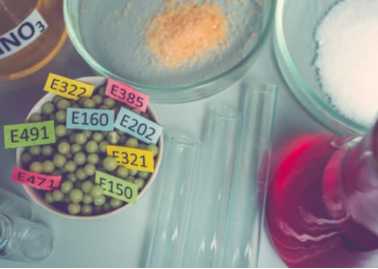Food additives have the following three characteristics:
It is the substance added to food, so it is generally not eaten as food alone.
It includes both artificially synthesized substances and natural substances.
The purpose of adding additives to food is to improve food quality and color, aroma, and taste, as well as to meet the needs of antisepsis, preservation, and processing technology.
Preservatives refer to natural or synthetic chemical components added to food, medicines, pigments, and biological specimens, to delay the spoilage caused by microbial growth or chemical changes. Nitrite and sulfur dioxide are commonly used preservatives. Food preservatives can inhibit microbial activity, prevent food spoilage, and prolong the shelf life of food.
Thickeners are hydrophilic polymer compounds, also known as hydrosols. It is mainly used to improve and increase the viscosity of food, maintain the color, aroma, taste, and stability of liquid food and jelly food, improve the physical properties of food, and make food feel lubricated and palatable. Thickeners are widely used in food, coatings, adhesives, cosmetics, detergents, printing and dyeing, rubber, medicine and other fields. Thickeners can be divided into two categories: natural and chemical synthesis (including semi-synthetic) according to their sources.
Most natural thickeners are produced from plants and seaweeds containing polysaccharide viscous substances, such as starch, pectin, agar, gelatin, seaweed fat, carrageenan, dextrin, tragacanth gum, and polysaccharide derivatives. Synthetic thickeners include cellulose derivatives such as methyl cellulose and carboxymethyl cellulose, starch derivatives, casein, sodium polyacrylate, polyethylene oxide, polyvinylpyrrolidone, polyvinyl alcohol, low molecular weight polyethylene wax, and polypropylene amides. Thickeners that are commonly used in beverage production as emulsion stabilizers are: sodium carboxymethylcellulose, propylene glycol alginate, carrageenan, xanthan gum, pectin, and locust bean gum.
Sweeteners
Sweeteners refer to food additives that impart sweetness to food or feed. There are many sweeteners used in the world. Sugar alcohol sweeteners are mostly artificially synthesized, and their sweetness is similar to that of sucrose. Because of its low calorific value, or because of its different metabolic process from glucose, it can still have some special uses. Non-sugar sweeteners have high sweetness, low dosage, small calorific value, and mostly do not participate in the metabolic process.
Because artificial synthetic sweeteners produce fewer calories, they are beneficial to patients with obesity, hypertension, or diabetes and are widely used in the food industry, especially the soft drink industry. The safety of artificial synthetic sweeteners has been proved by many studies. As long as the manufacturers use them strictly in accordance with relevant standards and label them correctly on the food labels, they will not cause harm to the health of consumers.
Leaving agent refers to the addition of a class of substances to wheat flour, the main raw material for the production of baked food, in food processing, and it is decomposed by heat during processing, producing gas, making the dough rise and forming a dense porous structure, so that the product has a bulky, soft or crispy texture.
Leaving agents play an important role in food manufacturing. Foods such as bread, cakes, and steamed buns are characterized by sponge-like porous tissues, so the taste is soft. In order to achieve this purpose in production, it is necessary to maintain a sufficient amount of gas in the dough. The air mixed in the material mixing process and the water vapor produced by the heating of the moisture contained in the material can make the product produce some sponge-like texture, but to achieve the ideal effect of the product, the amount of gas is far from enough. The vast majority of the required gas is provided by leavening agents.















